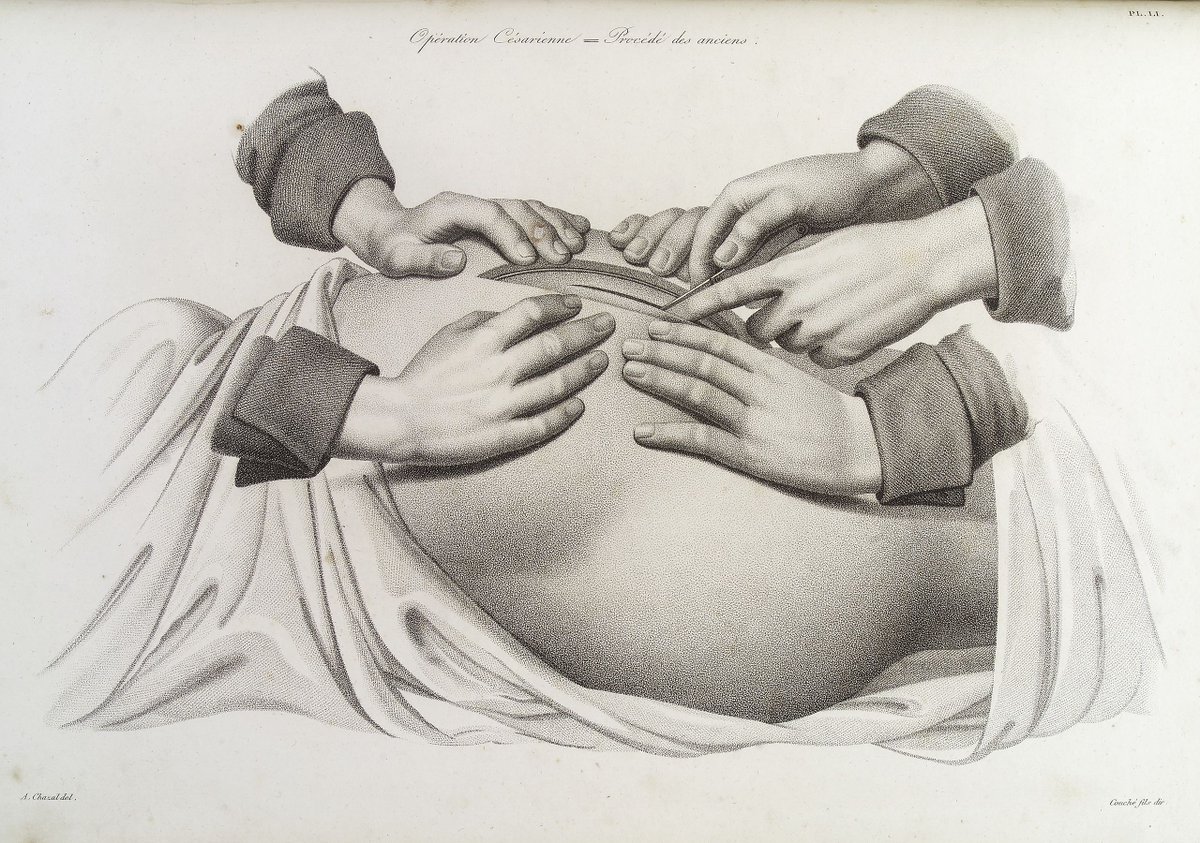
In 1726, a 25 year old woman from Surrey managed to successfully fool the British medical establishment into thinking she could give birth to rabbits. This is the story of Mary Toft. 

Mary Toft, was a poor woman, married to a clothier but she worked herself. In August 1726, working in the fields through her third or fourth pregnancy, she miscarried. All perfectly normal so far.
Then, in September, Toft went into labour again. And this time it got weird: animal parts started coming out of her.
The parts were sent to physician John Howard, who went to investigate what was going on. He witnessed Toft go into labour and give birth to three legs of a tabby cat, and a rabbit's leg.
After this she just kept giving birth to bits of rabbit. According to Toft, the cat legs had been born because she was thinking about a cat that had slept on her bed. The rabbits were formed because she was thinking about rabbits.
Howard insisted he had examined Toft's abdomen and seen signs of bunnies hopping around in her uterus. The rabbits, he speculated, were delivered dead and in pieces because they were crushed during the birth.
The strange case of the woman who gave birth to rabbits became famous and caught the ear of the royal court. Royal surgeon Nathaniel St. André was sent to investigate what was going on.
St. André arrived just in the nick of time to discover Toft in labour, giving birth to a rabbit torso. The next day, they came back to her in the grip of contractions, and she birthed some rabbit skin, a head, and some flesh which looked like it might have come from a cat.
The king sent more doctors. Surgeon Cyriacus Ahlers was perhaps the first to suspect the whole thing might not have been entirely legit, noticing that Toft squeezed her legs in such a way as to avoid things falling out of her.
Ahlers tested some specimens of the rabbit parts and identified something else kind of suspicious going on: there was straw and grain in the intestines of one of the bunnies. This proved the rabbits couldn't have originated inside Toft, unless she had a whole hutch up there.
Unfortunately, nobody really paid much attention to Ahler's very valid criticism of the whole birthing bunnies story, because St. André had collected a bunch of affidavits from people casting doubts on this account.
By this point, the newspapers were fascinated by the story: the miraculous or monstrous birth of baby bunnies! People all around the country knew the tale of the woman who gave birth to rabbits.
The king ordered Toft to be brought to London where she could be observed more closely, and by all of the doctors who wanted to see this for themselves. On 29th November, Toft was moved into a London bathhouse, and lived under constant supervision.
Many physicians, like St. André, believed the story. It fitted in with their theories on "maternal impression": that a woman's thoughts during pregnancy shape the baby. Mary Toft, after all, had already said she had rabbits on the brain.
Some were less convinced, most notably Sir Richard Manningham and James Douglas (namesake of the pouch of Douglas).
While living under supervision in the bathhouse, Mary Toft became sick. She had seizures. One fit lasted for over two hours, and when Manningham examined her, her pulse was so weak as to be undetectable.
And despite displaying abdominal pain, while in London, Toft did not give birth to a single rabbit. Not even a tiny little ear.
On 4th December, less than a week after arriving in London, the entire affair was exposed as a hoax. A porter at the bathhouse confessed to being bribed to smuggle in a rabbit.
A few days later, Manningham threatened Toft with exploratory surgery to examine her remarkable reproductive system. In 1726, this would have been an almost-certain death sentence, and Toft broke down and confessed to the hoax.
What Toft had been doing was no sleight of hand trick. Accomplices had been placing animal parts in her vagina, and she had been pushing them out.
The "labour" pain she displayed was probably more than showmanship: she was squeezing things with pointy claws and bones out of her vagina. Her illness was probably not faked either, as keeping bits of dead animals inside yourself is a surefire way to get an infection.
Toft was sent to prison. Her confession implicated numerous people in the hoax, including her mother-in-law and John Howard, as well as several other women.
The newspapers, which had only recently been reporting on the amazing story of the woman who gave birth to rabbits, turned on the medical establishment and on Toft.
The story was subject to satires. The British medical establishment became a joke. Voltaire wrote about the case from France, about the English and their silly superstitions.
Doctors fell over themselves to publish papers to the effect of "I never believed that rabbit hoax anyway". St. André in particular was disgraced. Also, he reportedly never ate rabbit again.
Toft was quietly released from prison after about four months, and about a year later gave birth to a human baby (we can't believe we need to specify the species). Not much is known about her later life, although she was briefly imprisoned again for receiving stolen goods.
A big question hanging over the Toft affair is WHY? And that's unclear. According to her confession, Toft was put up to it by other women. She mentioned one unnamed female accomplice who wanted a cut of money. However, the Toft family made no profit from the hoax.
Indeed, nobody really gained anything from the hoax. It caused embarrassment all round. Even the sceptics like Douglas and Manningham were temporarily tainted by their association with the case.
We'll conclude, we suppose, with some sensible advice from history: don't put dead rabbits up your vagina and pretend to give birth to them. There's much less dangerous and embarrassing routes to fame.
• • •
Missing some Tweet in this thread? You can try to
force a refresh










